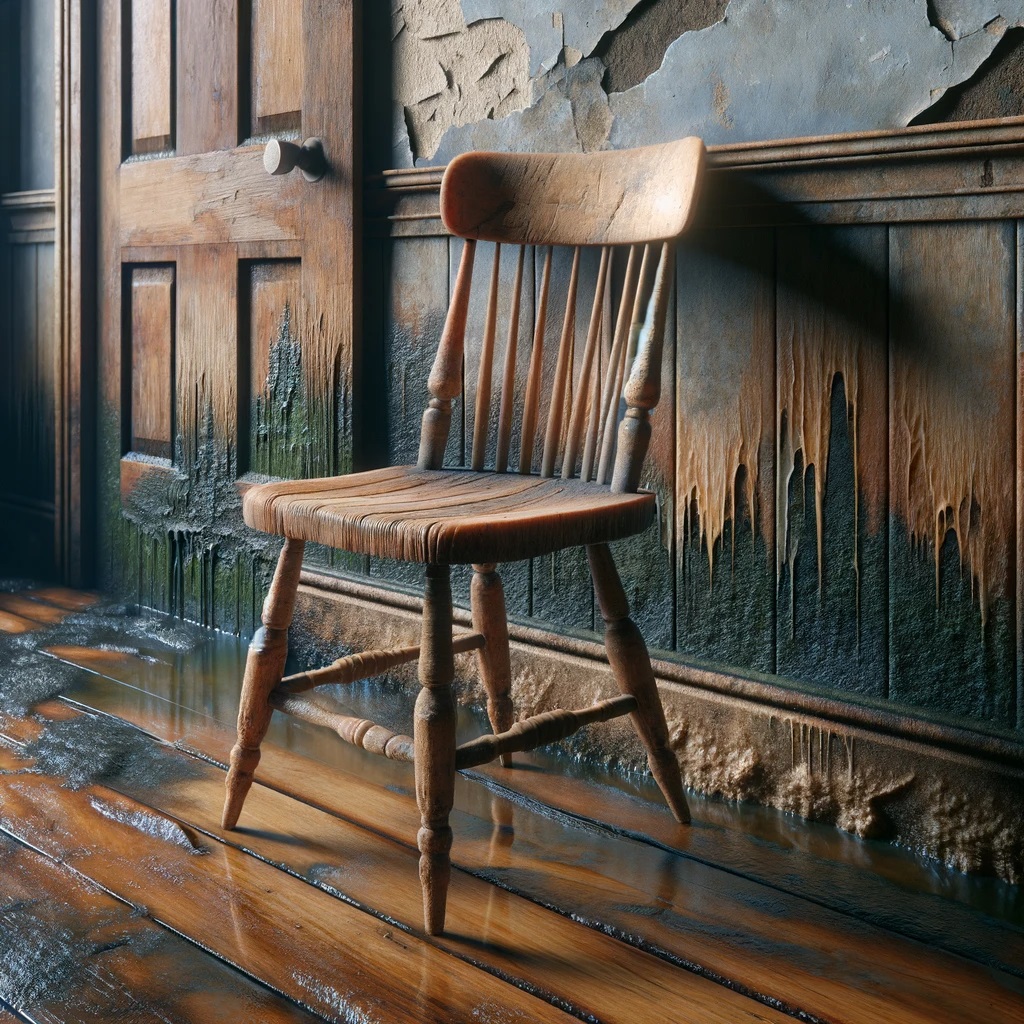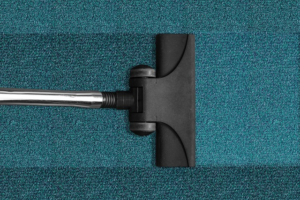If you find yourself struggling to let go of your furniture pieces, you might be wondering: Is there a way to save swollen wood furniture?
Well, the answer is yes!
In this article, we’ll show you how to fix water-damaged swollen furniture. And if you would rather have a professional do it, there are plenty of companies that specialize in post-flood restoration, like the Flood Kings in Nashville, Tennessee.
Assess the Damage
The first step in repairing damaged swollen wood furniture is to assess the extent of the damage. s. Look the wood furniture over carefully and take note of any signs of staining, cracking, warping, and swelling. If any of these issues are present, they will need to be addressed and repaired.
Let the Swollen Wood Furniture Dry Completely
The biggest problem that damaged, swollen wood furniture has to overcome is water, so the first step in the repair process is to dry the piece out.
Do not rush this step. Because water causes wood furniture to swell, forcing the swollen wood furniture to dry out too quickly could cause the furniture piece to shrink, crack, and warp.
What you need to do to dry swollen wood furniture is leave it to dry in direct sunlight. The heat from the direct sunlight will cause the water inside of the wooden furniture to evaporate. Just be sure to rotate the swollen wood table regularly. Otherwise, the wood could dry too quickly. To help reduce moisture from the swollen wood furniture, you should also wipe it down regularly with a clean microfiber cloth.
Additionally, if you’d prefer not to leave the furniture outdoors, you could use fans to help dry out water-damaged wood furniture. To fix water-damaged swollen wood, place it in a well-ventilated room with multiple electric fans running. Leave the wet wood furniture in there for at least 24 hours, bearing in mind that it might take longer to remove all of the moisture depending on how long the water-damaged furniture was submerged.
What if the Drawers of My Dresser Won’t Open?
It’s important to keep in mind that if your water-damaged furniture has doors or drawers that are swollen shut, you should not force them open. Using force could just make the damage worse. Instead, allow air to circulate inside the piece by carefully removing the back of it. Once the swelling from the water goes down, you can reattach it and have full functionality of the piece again.
What if I Can’t Get Rid of the Air Bubbles in My Furniture?
To help release air bubbles within the swollen wooden furniture, you can use an iron or a hair dryer, so long as it is on its lowest setting and is moved around constantly over the wood to minimize the risk of overheating and cracking or warping in one spot.
What if My Furniture Cracks While Drying?
If any cracks do occur in the drying process, you can fill them with wood glue.
First, apply the wood glue to the crack with a toothpick or a thin brush and then wipe off excess glue. If the crack is still visible after the glue has dried, you can use wood filler to finish filling it in, and no one will be the wiser.
Removing Deep Set Stains
If the furniture piece has deep water spots, you can remove them with a little bit of elbow grease and turpentine.
In a well-ventilated area, dip a damp cloth into the turpentine and gently rub it along the grain of the furniture. Instead of leaving the turpentine to dry, wipe it off the furniture. This should fix the color of the wood.
If this does not work, try taking steel wool in olive oil and rubbing it along the grain before polishing the furniture piece with wax.
Refinishing the Water Damaged Wood Furniture
In most cases, water-damaged swollen wood must be completely resanded and restained to return it to its former glory. You can begin this process once you have allowed the wooden furniture to dry completely.
What you’ll need for this next step is:
- Sandpaper (multiple grit sizes are ideal)
- Stain sealants
You should also wear safety glasses, a dust mask, and rubber gloves to protect yourself.
Begin by using a coarse-grit sandpaper to smooth down any areas of the wooden furniture that are still swollen. Then, switch to a finer grit to smooth out the entire surface of the furniture.
Once this is done, brush off any wood dust with a soft cloth before applying the stain sealant products of your choice to the sanded wood surface. You should be sure to allow these stain sealant products to dry completely before using the furniture or doing anything else to it.
Flattening the Wood
To help fix water-damaged furniture and return it to its former glory, you should use a flattening tool to reshape it after it has been stained.
Protecting Wooden Furniture From Future Water Damage
After going through all of that effort to fix water-damaged swollen wood furniture, it would be a shame to see it face the same problems all over again.
Use an Oil Finish
One method to protect wood furniture is utilizing oil finishes to coat the wood. Some oil finishes you could use include:
- Tung oil
- Linseed oil
- Mineral oil
- Furniture oil
Applying furniture oil creates an exterior coating on the wood surfaces of the repaired furniture piece, creating a barrier that will block out water and keep the wood from swelling or warping.
To apply the oil, use a soft cloth and lightly brush it over the wood furniture. Be sure to remove any oil residue quickly so that it doesn’t stain and create an uneven finish.
Use a Wood Moisturizer
Another way you could protect wooden furniture would be to use a wood moisturizer. This works best on interior furniture, like indoor tables, to prevent drying, cracking, and warping.
Apply the moisturizer to a clean cloth and then spread it onto the surface of the wood furniture in the direction of the wood grain. Wood moisturizer should be reapplied every few months to maintain the health of the wood.
Practice Proper Care
Protecting wood furniture from water damage doesn’t stop once the piece is fully finished and returned to its rightful spot inside your home. There are still plenty of things that could cause it to face water damage again, not just floods. Here’s how you can continue to protect your wood furniture on a daily basis:
Use Coasters and Mats
The most likely forms of water damage your fully refurbished furniture will be up against are rings from coffee mugs. You can prevent rings by using coasters to set your beverages down on tables. This adds a barrier between the cup and the wood of the table, preventing water damage that will cause a raised ring to appear. If any liquids manage to drip past the coasters, you should clean up spills immediately before they have the opportunity to sink in and damage the wood.
In addition to these rings, the wood of your furniture can be warped by the heat and condensation of your meals and the dishes they’re served on. To prevent this, you should always use a placemat when eating a meal on wood furniture. Additionally, if any hot serving trays are being placed on the table, they should be set on a potholder to create a barrier to protect the wood from the heat of the dish.
Clean the Furniture Regularly
To keep the furniture in pristine condition, it’s important to dust and clean it regularly. Beware of cleaning products with harsh chemicals. These chemicals could accelerate the process of stripping the protective seal from the furniture, forcing you to have to reapply it more often. Instead of store-bought cleaning products, try using white distilled vinegar and a soft cloth or gentle scrub brush. White distilled vinegar is an effective cleaning product that is gentle enough that it will not strip the seal on your furniture.
For More Severe Damage, Call a Professional
To restore swollen wood, furniture completely, it takes time, sufficient working space, and sometimes even special tools. If the furniture is severely affected or you don’t have the time to fix it, call a TN Flood Kings and we will give you a quote.









